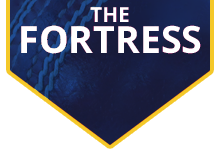Essex Cricket will always remember those brave heroes who fought in both world wars, with many also represent the Club before and after their service – here is a look at some of those men.
The First World War:
Although war was declared on August 4, 1914, cricket continued for a brief period, although the first class game immediately experienced the effects of the conflict. For example, Kent were forced to switch a match away from the Dover venue match whilst Hampshire had to move a fixture from their Portsmouth ground.
Both venues were needed for military purposes and The Oval was also commandeered and placed under military control forcing Surrey to play at Lord’s. Although their last two matches were cancelled, the “Brown Caps” were declared County Champions by the MCC, who governed the English game at that time.
Essex continued to play on despite the official declaration of war and in fact, another six matches were contested before the curtain came down on the season. Their final match took place at Weston-super-Mare on September 1st where Somerset was beaten in two days. The hosts were bowled out for 141, with Geoffrey Davies taking 4 for 18, before the all-rounder hit a superb 118 out of 235, the highest score of his career and his second century of the summer. In their second innings, Somerset could only manage 130 and the visitors collected the 37 runs required without loss to record victory. Sadly, it was to prove the last game for Davies who died in battle one year later.
During the war, the County played around 30 matches a season against local clubs and military opposition to keep the interest alive. In 1917, senior administrators within the club dipped into their own pockets to clear a deficit of almost £141 although this still left a previous debt of £560 to be addressed.
The following Essex players were amongst the many brave souls who sacrificed their lives on behalf of their Country.
Geoffrey Davies was born in Poplar and first played in 1912 having obtained a blue at Cambridge. A player with exceptional potential, sadly he was to lose his life in battle before being given the full opportunity to underline his talent as a slow-medium and off-break bowler who was also a more than useful batsman. He was also an excellent slip fielder.
The player assisted Essex between 1912 and 1914 and in all first-class matches in the last of those years; he made 852 runs at 21.30 and took 83 wickets at 19.72.
Commissioned in the 11th Essex regiment, he rose to the rank of Captain but was killed in action on the Western Front at Hulluch on September 26, 1915, at just 22 years old. Wisden reported that ‘he would have developed into an England player.’
Henry Keigwin fell in action near Thiepval on September 20, 1916. He had returned from Africa at the outbreak of war to serve with the Lancashire Fusiliers and had reached the rank of 2nd Lieutenant at the time of his death. Born in Lexden in May 1881, he was a fine stroke player who had been a prolific batsman for Peterhouse College while at Cambridge and twice reached 1000 runs before the end of May. He played for the Gentlemen against Surrey in W.G. Grace’s last first-class game in April 1906, scoring 77 and 27.
Keigwin made 11 first-class appearances, including four for Essex, between 1906 and 1907 scoring 69 runs and took four wickets as a left-hand medium-pace bowler. He then became a director of music at Glenalmond in Scotland and assisted the Grange CC. He also appeared for Scotland in representative matches.
Frank Street died in action at Ovilliers la Boiselle in France on July 7, 1916. He had played for Westminster XI where he was described as “a good bat with an extremely pretty style and a steady bowler.” He went on to Oxford University gaining his Blue for association football although not for cricket. He made 9 appearances for Essex, four in 1898 and five the following year when he averaged 30.66 including 76 against Leicestershire and 60 against Hampshire. He then transferred his interests into the world of business. Commissioned in the Royal Fusiliers at the outbreak of World War One, He was 46 years old when he was killed in battle on the Western Front.
Edward Coleman kept wicket for Essex in a couple of matches in 1912 taking one catch and a stumping. An excellent gloveman and a left-handed batsman, he was born in Southend in 1891 and educated at Dulwich College, playing for the Dulwich XI for four seasons. A lieutenant in the Royal Fleet Auxiliary, he was killed in action in Salonika on April 2, 1917, aged 25.
Harold Mead, son of Walter Mead, died at Epping three years after the war ended. He had played for the County occasionally before hostilities began, but while serving with the Essex Regiment, he was severely wounded in 1915 and it is believed that he never really recovered. He died in April 1921 at the age of just 25 years.
Apart from those gallant individuals who gave their lives for the war effort, the deaths also occurred during the war of two men who had played a prominent part in the advance of Essex County Cricket Club.
James Round died at his home at Birch Hall on Christmas Eve 1916 age 74. It is widely accepted that had it not been for his early enthusiasm, there would not have been a County Cricket Club. He had played for the gentlemen of Essex in matches against their counterparts from four other counties in the early 1860s and he went on to captain the County side between 1976 and 1882.
He was acting as chairman when the Club was formed on January 14, 1876, and he also took on the role of treasurer at that time. Over the following years, it was his boundless energy and enthusiasm that moved the Club forward and eventually first class status was achieved.
Three weeks before Round’s death, Charles Green died at his home near Epping aged 70. A Cambridge Blue, he was a leading figure cricket long before Essex were given first-class status and it was he who took on the responsibility for shaping the Club and then rescuing them financially on several occasions. He had captained the side between 1883 and 1888 and was described as the leading spirit of the County Club. A man of energy, influence and authority, Essex Cricket became his passion and it is acknowledged that without him, there would be no Essex County Cricket Club.
The Second World War:
The season was almost over when war was declared on Sunday 3 September 1939 and only ten first-class matches were cancelled. Four were due to begin on Saturday, 2 September but all were delayed due to the emergency and then cancelled after the declaration of war. Essex cricketers Stan Nichols and Peter Smith had both been selected for the MCC team to visit India in the winter of 1939-40 but that tour was inevitably cancelled.
The last scheduled match for Essex had taken place when the second fixture of the Clacton Festival occurred on August 26 when Northamptonshire were beaten by 10 wickets to give the County a second resounding win. Those victories ensured that Essex finished fourth in the Championship and their most successful season since 1897. The County now had one of their best sides for many years and it is quite likely that, but for the intervention of hostilities, they could have progressed to be realistic title challengers over the next few years.
However, with the outbreak of war, several of the County staff including players and Committee members joined the forces and were to make distinguished contributions including for some, the ultimate sacrifice of giving their lives for their Country.
Sadly, in 1941, the hostilities accounted for the tragic loss of Kenneth Farnes and Lawrie Eastman.
Kenneth Farnes joined the RAF in 1940 and was posted to Canada for training, returning to the United Kingdom to become a night-flying pilot. Described by many as the fastest bowler ever to play for England, he was a giant of a man. Standing 6ft 5ins tall, he played for Essex during the 1930s taking 685 wickets at an average of 19. He was selected for England and played 19 Tests taking 60 wickets at an average of 28.
Although past the age of compulsory call-up during World War II, he volunteered to serve as a night flier, within four weeks of his return to England following the training course in Canada, he met his disastrous end. On 20 October 1941 at the age of 30, he undertook a night training flight from Chipping Warden airfield but crashed and was killed instantly. His death came as a great shock to countless friends and the whole world of cricket.
Last year, he was commemorated at a ceremony in Chipping Warden, near Banbury Oxfordshire, when a plaque marking the spot close to where he died was unveiled.
Lawrie Eastman died in Harefield Sanatorium on April 17, 1941, following an operation. A high-explosive bomb burst close to him while he was performing his duties as an ARP warden causing him severe shock. He was 43 years old and had played for the County from 1920.
He had also served on the Western Front during World War One and won both the Distinguished Conduct Medal and the Military Medal. He had intended to take up medicine as a profession, but the outbreak of the Great War forced him to give up that idea and he became interested in cricket. He played 442 matches for Essex scoring 12965 runs and taking 975 wickets and batted in every position from one to eleven during his career. He did not enjoy the best of health for many years, otherwise, he would have been seen to greater advantage on the cricket field.
In 1942 came news of another tragic loss. Squadron leader Claude Ashton was killed in a flying disaster along with another county cricketer R de W K Winlaw on October 31. A quite outstanding games player who won Cambridge University Blues for cricket, football and hockey, Ashton had played for Essex for 20 years.
In addition to earning 13 amateur football caps for England, he also gained a full International cap when captaining England against Ireland in 1925. The youngest of three brothers to represent the County, he made 89 appearances for Essex while continuing his profession as a chartered accountant. He missed five years cricket because of business duties and his return came in a remarkable match at Brentwood where Kent scored 803 for 4 wickets. Ashton showed he had retained his batting form with an unbeaten 71 in reply and in the next match of the festival week against Surrey, he scored 118 helping his side to an innings victory.
Reginald Taylor was a stylish and forcing right-hand batsman and slow left-arm bowler who made 206 appearances for Essex between 1931 and 1939. He was also a good slip fielder. At the outbreak of war, he joined the RAF and was awarded the DFC as a Pilot Officer in 1940 for his outstanding work as an observer with Bomber Commander. The award came when he was serving with a Lysander Squadron during the Dunkirk evacuation.
He was the first professional cricketer to win the DFC in World War Two. He survived the war and played for one season as an amateur in 1946 before going into business and emigrating to South Africa where he became Captain of the Wanderers Club. He died in January 1984 in Johannesburg at the age of 74.
Peter Smith received a commission as 2nd Lieutenant having enlisted in the Army on September 1 1939. He became a Captain with the Essex regiment the following year and was posted to Egypt in May 1943 as staff-captain of Combined Operations and Troop Movements at Alexandria. One of the great players in Essex Cricket history, he survived the war and continued his long and distinguished career shouldering the responsibility of carrying the workload of the attack with his cousin Ray Smith. Peter was selected for the second Test against India in 1946 but illness prevented him from partaking, but he did get his opportunity on a rain-ruined match at The Oval later in the series. He retired at the end of the 1951 season. By then, he had played in 434 matches for the county, taken 1610 wickets and scored 9652 runs. He died while on holiday in Hyeres, France in 1967 at the age of 59 when suffering a brain haemorrhage following a fall.
Another casualty of the war was Essex Club Secretary Lieutenant Colonel Brian Castor, who was officially reported “missing” when Singapore fell into Japanese hands. However, in 1943 came news that although he was still alive, he had been taken prisoner by the Japanese. Then in 1945 came the welcome and heartening news that Castor had returned safely to the UK following his experiences in the Far East. He had been appointed secretary to Essex in 1930 and retained the post until 1947 when he took up a position with Surrey in 1947 staying there for 11 years. A useful cricketer, he frequently captained the Essex Second XI.
Meanwhile, Lieutenant Colonel JWA (John) Stephenson, a former captain of the Club, and fine all-round cricketer who played 61 times for the County was another who gave distinguished service during hostilities. He was always entertaining, full of energy and enthusiasm and there was seldom a dull moment on the cricket field when he was present. He bowled brisk medium-pace and was a useful attacking lower-order batsman whilst also a brilliant fielder.
The war virtually ended his serious cricket career although he did play one match for Worcestershire in 1947. He was awarded the DSO in Tunisia. He commanded the 1/7 Battalion of the Middlesex Regiment from 1942 until 1945 and was a splendid and inspiring leader, fighting in North Africa, Sicily and Italy. After the war, he took up a couple of business appointments, took up golf and retired to Sussex where he died in 1982 at the age of 74.
First-class cricket did not resume until the first of the Victory Tests on May 19, 1945, but in the intervening years following the outbreak of hostilities in 1939, the Essex Committee agreed to play a series of matches against local Clubs on the various County grounds.
Later, matches were arranged with the proceeds from collections sent to help the war effort. On one occasion, in 1941 at Lord’s, a combined Middlesex and Essex team took on a side selected from their Kent and Surrey counterparts and it was estimated that 15,000 watched the first day’s play. The County continued to field representative sides in various guises throughout the war and also continued with a series of coaching classes for juniors.
County Cricket resumed in 1946 but sadly, without several players whose careers were forfeited on behalf of their fellow countrymen.
We will remember them.















